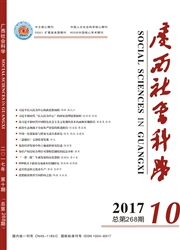

 中文摘要:
中文摘要:
当前中部地区已经进入到一个深化改革的新发展时期、全面建成小康社会的攻坚时期和推进现代化建设的关键历史起点.在经济新常态背景下,中部地区社会发展呈现出过渡性的新常态特征:经济实现较快增长,但社会发展水平相对滞后;经济社会发展协调性虽整体提高,但仍存在轻度失调现象;社会发展能力较低,尚处于"低福祉增长"阶段;革命老区和贫困山区集中连片分布,是我国全面建设小康社会和推进社会治理现代化的关键区域;由生存型社会向发展型社会过渡,由生存型福祉向发展型福祉转变;社会发展宏观调控由"社会管理"向"社会发展治理"转变.为此,中部地区要以增进社会公平正义和增进人民福祉为出发点和落脚点,坚持促进经济与社会发展的良性互动和协调共进,创新中部地区社会发展治理机制,加快经济发展成果向居民福祉转换.
 英文摘要:
英文摘要:
Nowadays,the central China is in the special historical period of deepening reform,building a comprehensive well-off society and improving the construction of modernization.Under the background of economic " new norm",the social development of central China also presents transitional " new norm" characteristics.The economy of the central region has been growing rapidly,but the human development has lagged behind.The coordination of economic and social development in the central region has improved overall,but there are still mild dissonance.The social development capacity of the central region is low,and it is still in the stage of " low well-being growth".The revolution and the poor mountainous areas are distributed in the central region,which is a key area for China to build a well-off society in an all-round way and promote the modernization of social governance.The central region is transitioning from subsistence to developmental society,from subsistence to developmental well-being; the macro-control of social development in China is changed from " social management" to " social development governance".This paper focuses on those " new norm" characteristics and suggests that promoting social justice and public interests,enhancing coordination degree of economy and society,accelerating government mechanism innovation,quickening the pace of conversion achievement of economic development to people's well-being and speeding up the transformation from survival-oriented well-being to developmental well-being would be important strategies to improve social governance and social development in central China.
 同期刊论文项目
同期刊论文项目
 同项目期刊论文
同项目期刊论文
 期刊信息
期刊信息
